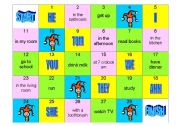
|
DAILY ROUTINE AND TELLING THE TIME
A MULTIPLE PAGE WORKSHEET FOR YOUNG LEARNERS TO PRACTICE PRESENT SIMPLE WITH EVERY DAY ACTIVITIES AND TELLING THE TIME (a boardgame, telling the time worksheet, battleships game, scrambled sentences, asking for information activity with detailed instructions for all activities)
Level: elementary
Age: 7-10
Type: worksheet
Downloads: 210
|
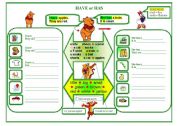
|
HAVE OR HAS
A WORKSHEET FOR YOUNG LEARNERS TO PRACTISE WRITING AND TO UNDERSTAND THE DIFFERENCES BETWEEN SINGULAR AND PLURAL OF NOUNS
Level: elementary
Age: 7-9
Type: worksheet
Downloads: 101
|
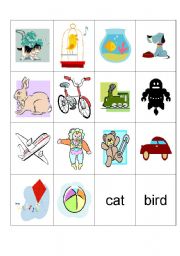
|
PETS AND TOYS
A WORKSHEET ABOUT PETS AND TOYS - for young learners (flashcards, writing activity, wordsearch and a class survey)
Level: elementary
Age: 7-9
Type: worksheet
Downloads: 12
|
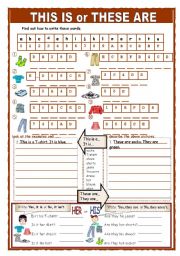
|
This is or These are
This worksheet is for elementary students to practise describing nouns which are in singular or plural.
Level: elementary
Age: 7-10
Type: worksheet
Downloads: 142
|
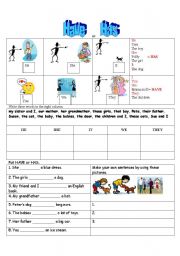
|
Have or has
This worksheet points out how various subjects are followed by
have or has. It teaches children how to define which personal pronoun the subject is.
Level: elementary
Age: 7-9
Type: worksheet
Downloads: 12
|
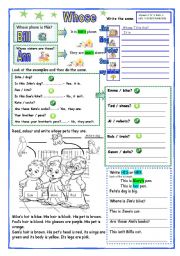
|
WHOSE
Not so easy worksheet for beginners to practise expressing possessions
Level: elementary
Age: 7-10
Type: worksheet
Downloads: 360
|
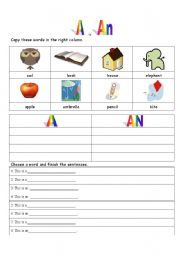
|
A or AN
This is an activity to help children become aware of the differences between A and AN.
Level: elementary
Age: 7-9
Type: worksheet
Downloads: 11
|
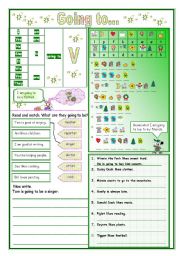
|
GOING TO
This is a simple worksheet to practise the affirmative form of Going to Future in combination with reading and writing activities for young learners
Level: elementary
Age: 7-10
Type: worksheet
Downloads: 202
|
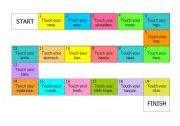
|
Body Parts
boardgame for practising body parts
Level: elementary
Age: 7-10
Type: others
Downloads: 9
|
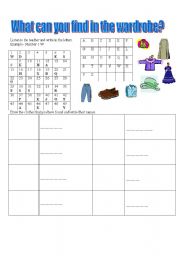
|
What�s in tha Wardrobe
This worksheet revises children�s knowledge of numbers and alphabet in order to find clothes words
Level: elementary
Age: 7-10
Type: worksheet
Downloads: 5
|